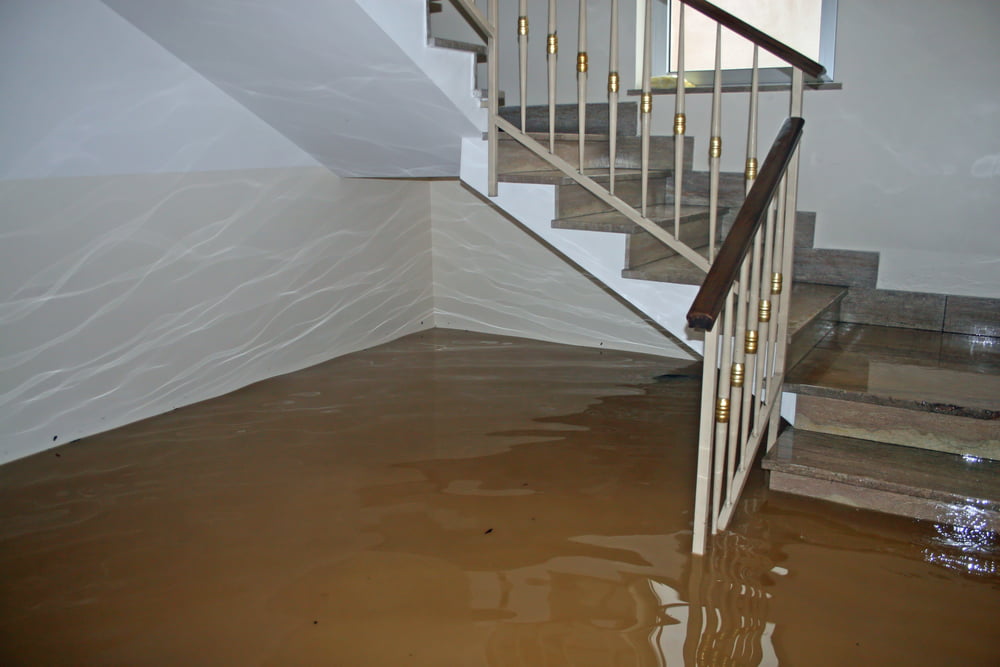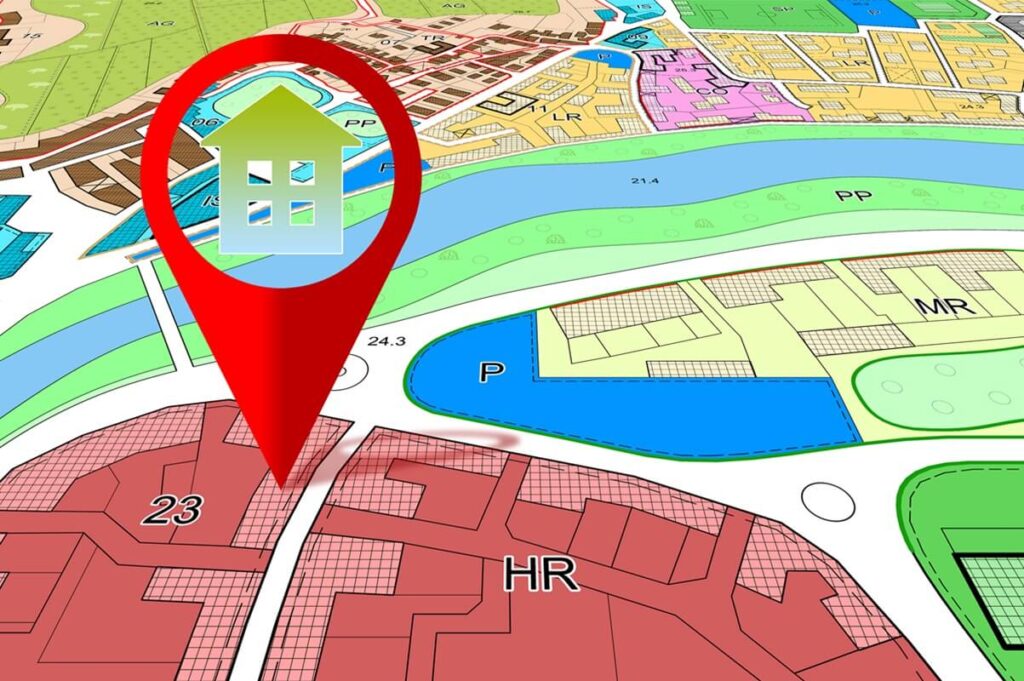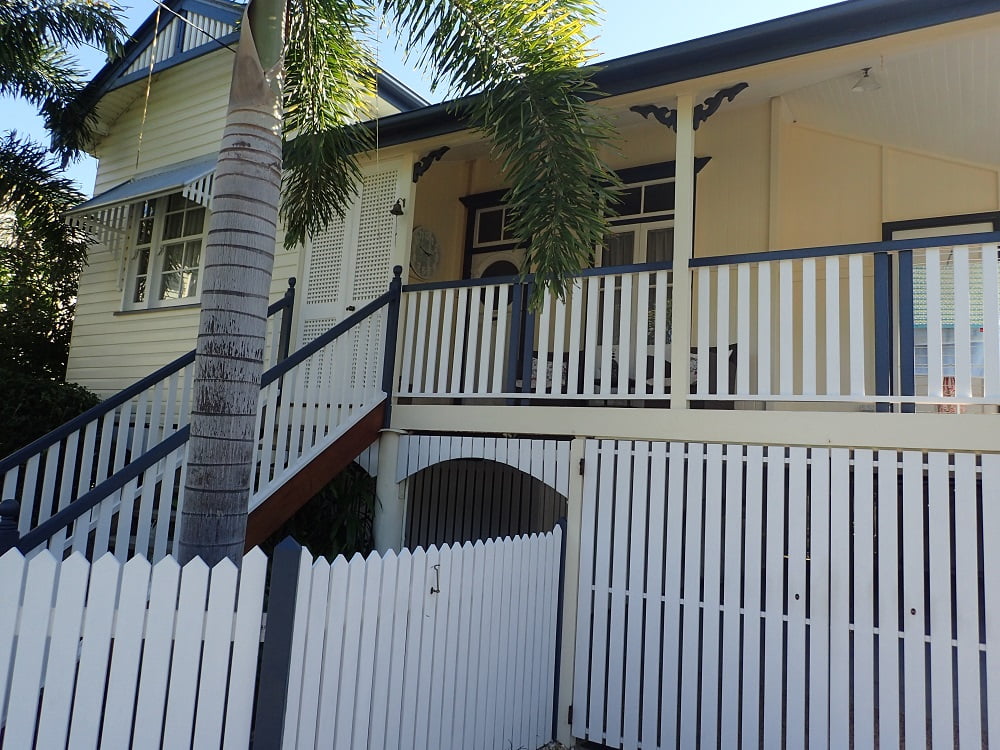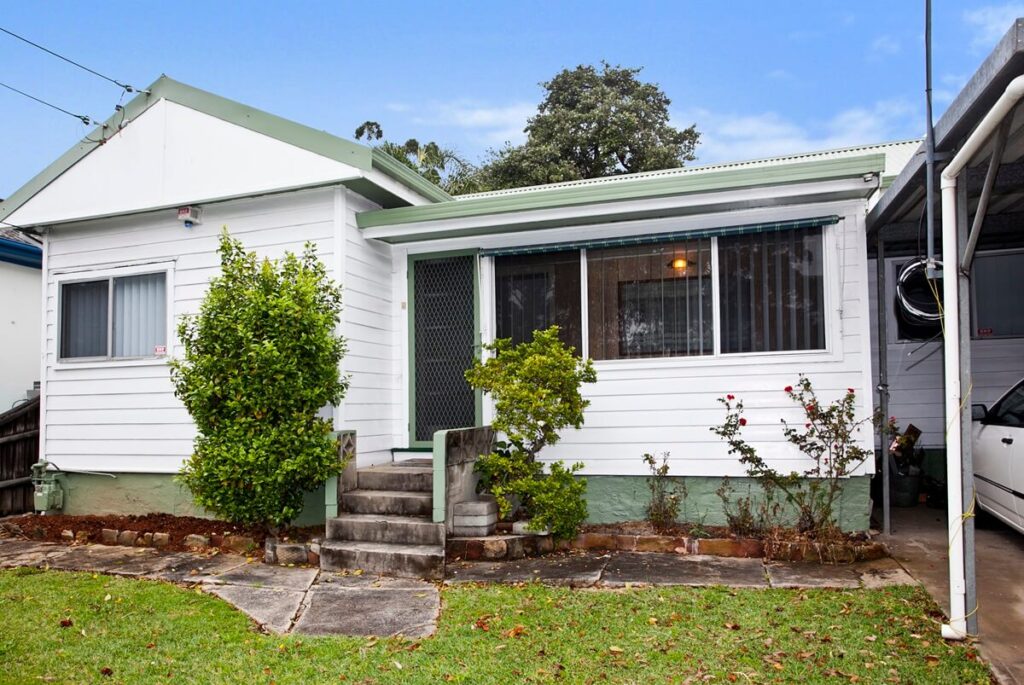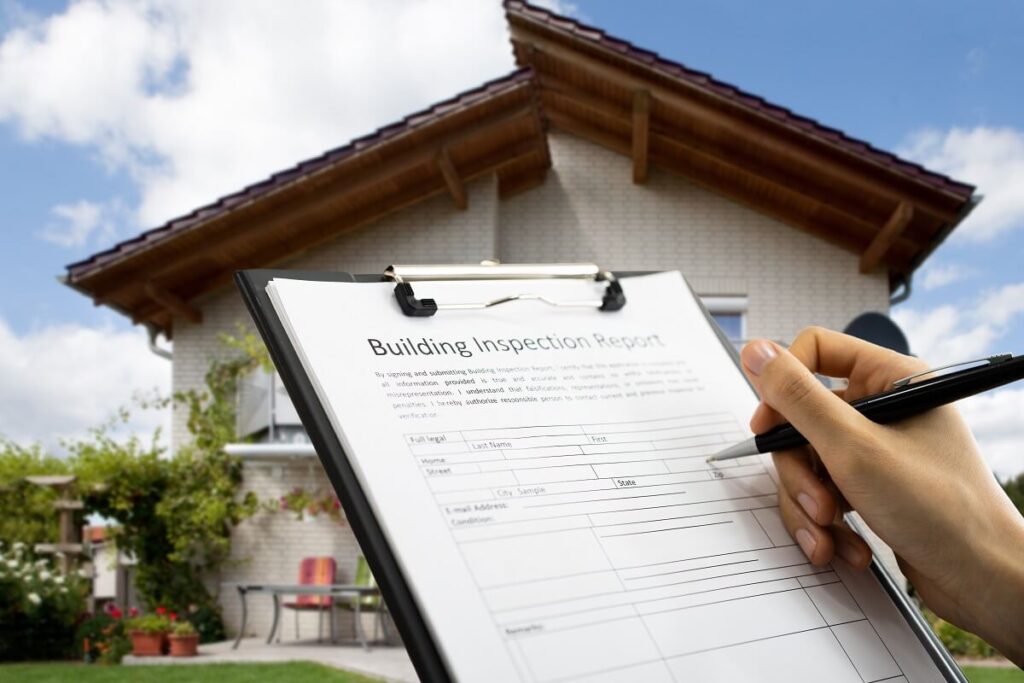Be Prepared. Be Informed. Buy with Confidence.
Avoid making a major financial blunder. Ensure your first home is a sound investment not an instant money pit with an independent building inspection.
Request a call back before you buy. You’ll thank yourself later.
First Home Buyers: The Complete Guide to Avoiding BIG Mistakes
Updated 2024
Disclosure: Andrew Mackintosh is the sole building inspector at Action Property Inspections. He’s a qualified builder and has been performing pre-purchase inspections since the 1990s. He is fully certified in the building trade and the Property Inspection industry. He has, at times, acted as a spokesperson for the industry and an advocate for Brisbane property buyers. He is well known in the Brisbane industry for his reputation for fastidious and legally binding property inspections. This information has been updated for 2022 as the real estate industry has changed dramatically and buyers are reporting new and problematic advice given by agencies.
Everything a First Home Buyer needs to know about house hunting
Buying your first home is such an exciting time. You’re feeling hopeful and perhaps a little nervous. However, chances are this process is completely foreign to you, leaving you with no idea how to find an excellent investment and not a money pit. Don’t let this ruin your house-hunting fun, though. Instead, keep your enthusiasm high by taking some time to read and learn all the red flags and warning signs. Arming yourself with knowledge beforehand is the best way to protect yourself and your hard-earned cash when buying your first home.
While the buying process can seem daunting at first, especially for first-home buyers, the process doesn’t need to overwhelm you. Protect yourself by being well-informed. The Queensland Government website is an excellent place to start and takes you through the steps of buying a home.
Buying a home will likely be your most significant financial investment, so you need to take steps to ensure the house or unit is suitable and in sound condition.
Work out your first home budget
Work out a budget and work out what you can comfortably afford for a house. Calculate home loan repayments, borrowing power, extra repayments, loan comparison, loan balance, stamp duty, lump sum, split loans with a calculator like InfoChoice.
When you budget, don’t forget to take into account additional fees such as Lenders fees (settlement and search fees, valuation, mortgage insurance), Stamp Duty, Solicitor and Conveyancing Fees, Search and Enquiry fees, Settlement and disbursement fees, Pre-purchase Building Inspection Report, Pest Inspection Report, Home Building and Contents Insurance.
Secure your finance before house hunting begins
Before you begin house hunting, you’ll want to know your borrowing capacity first. Researching the best home loan solution for you and then obtaining finance is the first step in the process of buying a house. Depending on your loan and grant eligibility, this can take anywhere between 4 – 6 weeks.
What should I consider when I start house hunting?
Looking for the perfect home can be so exciting, but there are lots of things to consider when house-hunting, especially in older homes without regulated building approval. You’ll also want to look for evidence of dampness, pest infestations or structural issues – things that can be easy to spot if you know the signs.
We’ll take you step by step through what to look for during this article. Of course, the main thing when you start house-hunting is to look in your price range and not to overextend your finances by purchasing a cheap house that needs more renovations than you can afford to make it livable. But how do you know what needs to be done and if it’s serious money to do? Keep reading.
Make an offer
Making an offer and paying a deposit is the next step in the process of buying a house in Queensland. Once accepted by the owner, it’s here, during the cooling-off period, that we step in for your all-important pre-purchase building inspection.
Ensure your contract contains a “subject to building and pest inspections” clause
Before signing your contract, ensure that the building inspection clause within the contract states that the building inspection must be to the purchaser’s satisfaction. Beware of contracts that state that you can only renegotiate or pull out of a purchase should there be a structural fault. In all instances, we recommend that your solicitor be provided with the contract before signing to check that all clauses are in order.
An independent building inspection is worth every cent
The building inspection is the most essential part of the process of buying a property. An experienced and impartial building and pest inspector can uncover hidden property issues – and this information can be the crucial difference between purchasing a dream home and buying an expensive nightmare.
While there are property red flags you can look for yourself when buying a house, a professional building inspection and comprehensive building inspection report are critical. We’re thorough and professional, identifying issues that may be dealbreakers when it comes to buying your house.
Buying a home is costly enough. Surely you can forget about the home inspection to save money, right? If it looks pretty good to you and the real estate agent says it’s in good nick, then surely it will be okay? Think again. Absolutely never rely on a Vendor’s Inspection Report provided by the real estate agent or the vendor.
Failure to invest in an independent home inspection is one of the biggest mistakes a first home buyer can make. What’s more, it’s a mistake that can be costly and cause unnecessary stress.
Imagine handing over your hard-earned cash for your dream home, only to find out a few months down the track that it’s riddled with termites. What about that brown stain on the wall in the bathroom you thought you could cover up with a lick of paint? That stain could be a tell-tale sign of deeper issues within the property. Don’t get stuck with a lemon that you’ll have to spend thousands of dollars on down the track. The house may look great at face value, but it’s what is hidden below the surface that you need to be aware of.
Investing in a home inspection or pre-purchase building inspection, will help protect you from making a bad investment. Only a trained professional can provide you with a reliable report of the condition of the home you wish to buy. A building inspector can give you peace of mind with your intended purchase or give you bargaining power if issues are uncovered.
It’s important to remember when you’re purchasing a property, that the vendor is working for the seller and will sometimes do anything to sell the home. They may downplay or conceal issues with the home and persuade you against a home inspection.
Remember that a house is the biggest investment you’ll make, and you need to go into it fully informed. A home inspection for buyers is the best way to find out the true condition of a property.
Ensure the contract allows 14 days for building and pest inspection reports
Ensure you sign a contract that allows you 14 days to obtain a building and pest inspection. The agents prefer you to sign a contract giving you 7 days – and sometimes as little as 5 days. This timeframe includes the day you sign the contract and weekends. This can force buyers to choose an inspection company in a rush – and unfortunately, not all building inspectors operate under the same set of standards and principles. In addition, the short timeframe doesn’t allow you enough time to digest the information in the report.
This is not a decision to be rushed.
Not all building inspectors and their reports are the same
Pre-purchase building and pest inspections are not something that can be left to chance. With such a significant lifetime investment about to be made, you cannot risk the decision by choosing the incorrect building inspection service. All building and pest inspection services are not alike. A checklist of things you should consider when choosing a property inspection company can be found here.
Contact Action Property Inspections on 1800 642 465 to find out why we are the leaders in our field.
Recognising a money pit before you make an offer
So, you’re a first home buyer and saved enough cash to get your foot in the door of the Brisbane property market. But even if you manage to find a property on the market for $400,000 or less, you’re taking a leap of faith. There’s a fine line between snapping up a bargain fixer-upper in the $400,000 price range and being stuck with a big fat lemon that’ll leave a bitter taste in your mouth for years to come.
Our Ultimate Guide to Open Home Inspections can help you narrow down your “list of contenders” when it comes to putting an offer in. However, to get the clearest possible picture of your potential first home BEFORE you buy it, you need to book a pre-purchase building inspection.
Some compromises are not worth the cost to first home buyers
In a perfect world, you’d embark on the search for your first home with a list of dream suburbs and a ‘money is no object’ mantra. The reality is, if you’re like most first-home buyers, you’re limited in what you can afford. You may set out with champagne tastes, but you’re going to have to compromise and drink cask wine along the way. That could mean setting your sights a little lower and opting for:
- a smaller or older house
- a less desirable suburb
- a longer commute to work or the city
- an unrenovated property, or
- living closer to commercial or industrial areas.
You must embark on your search for your first home having already considered the corners you’re prepared to cut and the sacrifices you’re prepared to make. Know your own ‘dealbreakers’ before you even start looking for a property.
Doing your research when looking for your first home means sitting down and crunching the numbers. Make sure that you know what your financial limits are. It’s not just about the purchase price of the property that you’re considering buying. It’s also the money that you’ve got to put aside or borrow to bring it up to standard. Those costs can include the following:
- repainting or re-carpeting the property
- removing asbestos
- repairing drainage problems
- addressing any structural problems
- re-roofing the property
- remedying termite damage
- replacing the wiring, or
- extending or reconfiguring the floor plan.
Find out a ballpark figure of how much you can borrow and look for properties that comfortably fit within that budget. Make sure you factor in the cost of making the property livable for you.
While you may be able to live with dingy painting and a dated kitchen, some issues will need fixing immediately before they become a bigger and more expensive hazard.
Do your research to narrown down suitable suburbs
Once you’ve got a realistic picture of the compromises you’re prepared to make, your next step is research. That means narrowing your search down to a few key suburbs or postcodes and devoting some time to getting your head around the local property market. Of course, when attractively priced properties hit the market, you’ll have next to no time to research, so get the groundwork done and get to know the area well before the clock starts ticking.
It’s all very well to know the selling points of the area you’re considering buying into. However, you need to dig even deeper to find the skeletons lurking in its closet. They can come in many shapes and sizes. For example:
- Close proximity to industrial plants and areas plagued by heavy traffic congestion can translate to problems such as timber fibrosis or hairy timber.
- A home built closer to an old asbestos factory can mean that it’s contaminated with asbestos fibres.
- Proximity to the coast can mean an increased risk of corrosion and concrete cancer from exposure to moist, salty air.
- Homes built on reactive soils can be at greater risk of structural defects.
Every suburb has a downside. The key is ensuring that you know what you might be getting yourself into and taking steps to minimise the risks.
Knowing the history of your suburb and the environmental factors at play can come in handy for picking up on these seemingly minor details. But it’s the little things that can have catastrophic and expensive consequences in the long run! You can read up on the common property problems inspectors come across daily on our blog.
Know the future plans for your suburb
Take a look at the suburb as a whole first. You can do that via an online buyer’s handbook that will present rich and relevant information about your suburb of choice.
Really getting a feel for a suburb or postcode means knowing what the plans are for the future. That includes getting your head around significant developments slated for that area. This enables you to make an educated guess about how property values might be affected. Look for things like new schools, shopping centres and rail links. Anything that makes the suburb more livable or reduces commute time to Brisbane can positively affect real estate values. Areas with excellent infrastructure and reliable public transport will always be in demand.
Also, look out for nearby suburbs that are heating up, as they often have a flow-on effect in terms of bolstering interest and demand for properties in adjacent suburbs.
Research your competition in the buyers market
You need to find out as much as you can about the competition. Are you competing against other first-home buyers, or is your preferred suburb ripe for investment and redevelopment? Is the area open to subdivision? If so, chances are you’ll be competing against potential buyers who have much deeper pockets than you. That can push prices up in an area. It could also mean you’ll be trying to buy an older property that could soon be surrounded by newer, more attractive properties. That could, in turn, make your property less desirable when you put it back on the market a few years down the track.
That kind of information can mean the difference between a savvy renovation and overcapitalising by pouring too much money into a property for little eventual return.
Check the Flood Map
Brisbane and the surrounding areas are prone to flooding. This will impact your purchase decision-making as well as your insurance options.
Concerned? Take a look at the Brisbane City Council’s flood awareness map here.
Inspecting homes in your short listed suburbs
It’s time to attend open house inspections. This is where the real estate agent will open up a house for prospective buyers to do a walk-through and see the house in real life after liking what they see online. However, don’t just walk through looking at how great it is. Look closely to spot red flags. Depending on what they are, you’ll want to raise them with your building inspector later on, or you might decide to rule that property out altogether.
Fresh paint can be a cover for underlying trouble
A coat of fresh paint always does wonders to uplift a property for sale, but areas which look to be spot painted could spell trouble. In particular, look for one room painted a different colour from the rest of the house or rooms where only one wall or section of the ceiling is painted. This could potentially be the seller trying to cover up an underlying problem.
Take a closer look and find the true cause of stained walls
Stains on walls may not just result from an owner with a lax cleaning regime. It could hold the answer to some underlying issues. It’s essential to find out the true cause of these stains through a pre-purchase property inspection.
Stains on walls could result from so many things, including a roof leak, an internal plumbing leak, a shower leak, or mould from poor ventilation. Stains may look like an easy fix, but their underlying problems can cost thousands of dollars to fix.
The list of dodgy DIY possibilities is long, and some more dangerous than others
With the rise of DIY (thanks to popular home renovation shows), many properties have DIY repairs and renovations. Some are done very well, but there’s also a lot of dodgy DIY out there. Keep an eye out for dodgy plumbing, electrical and carpentry work, leaky taps, and uneven flooring.
Perfume can hide damp and other problems
Real Estate agents love to encourage sellers to create a certain feel when potential buyers enter a property, suggesting everything from baking something in the oven to burning oils or having fresh flowers throughout the house. This is a lovely touch, but are these pleasant aromas hiding something they don’t want you to know about?
Pay very close attention to odours. For example, the property could have an unpleasant pet odour or a strong smell of dampness which is a sign of more severe problems. If you’re concerned that the ‘nice’ smells are getting in the way of a thorough house inspection, request a second visit without the candles, food, and flowers.
If you go for your second inspection, have a thorough look, smell and feel with this checklist:
- Check the outside and the foundations. Look for large cracks, moisture retention, and salt dampness.
- Check the eaves outside for signs of water damage or large leafy trees near the roof. Check that gutters are maintained regularly. Are they currently blocked?
- Inside, run your eyes over the walls looking for cracks in the wall linings, and water damage or mould to the ceiling linings. Also, look for door openings that run out of alignment or doors that don’t close correctly.
- Open cupboards under taps, check for water damage or mould and smell for musty odours that signal hidden mould. Look at the gyprock around the interior and exterior of wet areas to see apparent indications of internal wall leaks and water damage.
- Check the floor for waves or dips and look for gaps between the flooring and the skirting boards. Any sign of a sinking floor can be a big red flag.
Dodgy electricals can be life-threatening
Although electricals should be inspected by a licensed electrician, there are still obvious things to look out for, particularly in older properties.
In addition to dodgy DIY repairs, keep an eye out for:
- exposed wiring
- the condition of the power points and switches – test switches to see if the lights flicker
- adequate smoke alarms
Unfortunately, DIY electrical work costs money to rectify and can pose a serious safety risk. In addition, some older properties may have wiring with conduit insulation that is old and hazardous.
We always recommend having a licensed electrician complete a thorough inspection to ensure electricals abide by current government regulations.
Sticky doors and windows can indicate larger prolems
Don’t be afraid to go around opening and closing windows and doors during a house inspection because if they don’t open or close properly, you’ve found yourself another red flag.
When windows and doors don’t close properly, and if there are obvious cracks in walls, the foundation could have an underlying issue. It could be a case of minor subsidence, or it could be a more significant structural problem.
Watch for creaking, cracking, wavy and spongy floorboards
Wooden floorboards are often the popular choice of flooring in Brisbane due to many houses now being placed on stumps or posts to avoid flooding.
The advantage of polished floorboards in these houses is that it’s quite easy to spot issues with the stumping and structural integrity of the home. Some signs to keep an eye out for with floorboards are:
- Loud creaking or movement in floorboards, even when carpet or laminate flooring is placed over. Loud creaking and movement can be a sign of trouble in the undercarriage, from slight movement in the studs and support beams to structural wood rot and loss of support.
- Uneven or waved floorboards can also show that there is damage to the support beams or stilts that should be holding the house high and even.
- Spongy floorboards or gaps between the flooring and the skirting boards at the base of the wall are often a sign of sinking – a big and expensive problem. Causes include age, lack of maintenance, or even prior flood damage.
With any flooring issues, do not ignore the whispering of trouble. This is the foundation of the house, and any issue here can flow right through the property, causing you a very expensive list of repairs.
Aside from past flood damage, look for other damp issues
Rising Damp
Rising damp occurs when water seeps into the walls of your home from the ground up.
Signs of rising damp:
- Tide marks (potentially up to 1m up the interior wall)
- Staining or blistered/peeling paintwork
- Musty smells
- Damaged skirting boards
Condensation Damp
The amount of moisture in a room can cause condensation damp, especially when the air outside is colder than inside. It’s most common in areas where there is a lot of moisture, like the kitchen, laundry, and bathroom.
Signs of condensation damp:
- Dark mould around windows
- Water droplets on windowpanes
- Streaking on walls
Penetrating Damp
Water leaks in the wall or roof are referred to as penetrating damp. It can be caused by leaking roofs, damaged exterior walls, ill-fitted windows and doors, leaking downpipes or internal plumbing, and overflowing gutters etc.
Signs of penetrating damp:
- Sudden brown stains on interior walls/ceilings
- Wet, crumbly, or bubbly plaster
Lateral Damp
Like rising damp, lateral damp occurs when water penetrates your wall. The causes of lateral damp are damaged wall tanking barriers, garden beds too close to the house, and cracked walls etc.
Signs of lateral damp:
- Damp patches at any height on walls
- Formation of salt crystals on walls
Signs of flood damage to the property
There are several apparent signs of flood damage visible to the untrained eye. These include:
- Mould
- Damp smells
- Damage to the floors and walls
- Uneven floors
- Peeling, cracked, or bubbling paint
- Damage to the roof
- Mud in places it shouldn’t be, like in the tracks of doors or high up on walls or ceilings
- Water damage in the form of stained ceilings or walls
- Doors and window frames that appear to have shrunk or are misshapen.
House exteriors have different problems dependent on construction type
Different types of houses have different things to look for. Brick veneer houses have different problems compared with stump houses, and some fixes are more expensive than others.
Brick veneer homes
As is typical with any home over time, movement and settling of the building may cause some minor cracks to appear in brick veneer. But sometimes cracks can have serious consequences.
A professional building inspector would look at:
- The state of the plasterboard opposite to the external cracks (do they mirror each other?)
- The alignment of the doors and windows
- Any separation between the ceiling, floors, and walls.
If any major flaws are identified, a structural engineer should be your next logical call. More significant cracking of a structural nature may require significant costly repairs such as underpinning.
Stump houses
You can look for obvious signs in all stumped homes to identify if repairs or replacements are required. When at an open inspection, feel the floor as you walk. A dead giveaway of possible trouble is springy or uneven flooring. Less obvious signs are:
- Windows that don’t open or close easily because the frame is not square
- Cracks in the interior walls
- Gaps where the ceiling and the wall meet.
When looking at the home’s exterior, check for overgrown gardens near the stumps, gaps to infill cladding placed between the stumps, cracks in the external walls, and objects against the stumps that can act as superhighways to pests like termites.
If you can see the stumps, visually inspect them for wood rot, rust, and concrete cancer where the internal steel reinforcing within the stumps is starting to rust and the concrete is cracking around it.
A professional inspector should check for subtle signs by conducting a thorough underfloor inspection, even if there are no other red flags. Raise any issues you have spotted, and the inspector will also look for:
- Concrete spalling – where the concrete is cracking and blowing out, revealing that there is corrosion of the steel reinforcing within the stumps
- Wood rot and apparent termite damage to timber stumps
- Incorrect instalments – such as lack of stump bracing and missing stump tie down brackets
- Ant caps – checking they are correctly placed, and all are accounted for.
Purchasing a home that soon after requires restumping can be an expensive and heartbreaking repair if you are not expecting it. So be prepared and informed when considering a stumped house as your future home. Learn more about restumping here.
You should check the roof structure and the roof space
Brisbane’s roofs have a lot to contend with, from high winds and storms to high temperatures, surrounding trees and possums. It’s important to check the structure and roof space, looking for moisture, roof leaks and general damp issues as well as checking for signs of structural failure and incorrect roof construction.
The obvious signs of water damage to a roof cavity
The common causes for water damage to the roof cavity include:
- Blocked gutters and downpipes
- Inadequate stormwater drainage
- Broken roof tiles
- Intense rain or hailstorm
- Rusted roof sheets
- Rusted or deteriorated flashing around roof penetrations like vents and chimney
- Burst water pipe
- Poor weatherproofing
An inspection of the roof and gutters, including box and valley gutters, can determine the cause of the water leak.
What is roof flashing and should I look for it at open inspections?
Roof flashing is a material used to mould around penetrations or laid along a join in components to direct water away. This protects the building from internal water damage.
When you look from the ground view at a roof, it can be difficult to locate where the flashings are. But with a quick walk around the property, you may see penetrations like the toilet vent or a chimney. Sometimes you will see a metal, lead, or rubber moulding around this penetration. This is called a flashing and plays an important part in protecting your roof cavity from water leaks and damage.
Counter flashing is another term for cover flashing or cap flashing. It’s used around the chimney to protect your roof and any water seeping through the chimney base.
Flashing can be damaged due to age, poor installation, or corrosion. In some cases, it may not need to be replaced and can be sealed with a silicone for a temporary fix.
Damaged flashing will potentially allow water through the unprotected crevice, causing internal damage to the home. This could result in a wet patch on a ceiling which will then need to be repaired or replaced. Water leaks in a roof can create problems within the property, the worst being a ceiling collapse or wet rot in the timber joists and framing which can affect the structural integrity of the home.
Organising a pre-purchase building inspection can determine if damaged flashing is a dealbreaker for you.
Signs of water leaks in the roof
There are many reasons that a roof can leak, and some are technical. However, you can look for some simple but obvious signs like:
- The ceiling sagging in the corners and slight discolouration
- Obvious dark mould or discolouration on the ceiling
- Ceiling the only freshly painted surface in a room
- Actual wetness or dampness seen on the ceiling or appearing to show down the wall.
Red flags for pergola and decking risks
There are some red flags to keep a keep an eye out for with pergolas and decks. These are the obvious signs that the pergola or decking may be in dire need of repair or are a potential safety risk.
Start by looking for signs of decay damage. Moisture causes wood rot that can jeopardise the structural integrity of a deck or pergola structure. Decay is common to the bottom of supporting timber posts, along the top edge of rafters and floor joists.
Termites can also cause considerable damage to pergolas and decks by devouring timber components until they are no longer sound. Look out for signs of hard mud tracking up support posts, and where possible, look for hollow-sounding damaged timber components.
Checking the stability of structures outside
In some cases, you may not be able to visually inspect under the deck structure or around the base of the pergola supports. Trust your gut. If it moves in the wind or is wobbly when you push firmly or shake a structure, this is a sign of instability. The instability could be due to incorrect construction or deterioration. This requires urgent attention. Excessive movement could contribute to a structural failure that could pose a serious safety issue. It could also have substantial consequences for liability or insurance.
Pests can be hard to detect but there may be tell-tale signs
Termites, possums, rats, and mice – they’re hard to detect, but you can keep a look out for tell-tale signs.
For the presence of possums, listen for noise in the roof, particularly at night. Checking the attic or roof space is also another way to detect if there are possums present.
With rats and mice, it can be a little difficult, and a clean seller has likely vacuumed up any evidence of rat or mouse poo, but keep a look out for droppings in nooks and crannies that may have been missed.
An experienced building inspector can identify damage that may appear to be pest-related including the obvious such as:
- bees’ nests in brick walls
- obvious termite damage
- termite mounds or nests
It is highly recommended that you engage a pest inspection professional to inspect any prospective property you might be considering purchasing.
Be wary of hidden surprises in townhouses
Townhouses are a popular choice for first-time property buyers wanting to get an easy-to-maintain first home, and empty nesters looking to downsize. Purchasing a townhouse can be a wise investment with fewer worries than a large, detached home.
When buying a townhouse in today’s market, the secret is to do your homework. This includes enlisting the services of a building inspection professional to do the deep digging to ensure the property comes with no hidden surprises.
In some ways, townhouse inspections are even more important than for a stand-alone suburban house.
Here are some things you should look for at your open inspection.
- Outside – rising damp and water issues. Window and door seals. Cracks in walls and concrete. Fencing, roof, and gutter issues. Is the townhouse rendered brick or cheap rendered cladding?
- Inside – damp smell and water damage in wet areas. Cracks in walls. Window and door seals, and doors and windows not closing well due to shifting. Signs of water damage in walls and ceilings. Consider if the house has been maintained. For new builds, are the taps, lights, and extras cheap or quality parts?
- Location – Is the townhouse in a flood area or near a river or water source? Has it been flooded recently?
Your building inspector will take a deeper look at the property
While you can look for obvious red flags during a townhouse inspection, a professional inspector can go deeper to ensure your investment and potentially your safety are protected with a solid and safe investment. Your building inspector will look for:
- Joined walls – What are they made of, single brick, double brick, or gyprock? This is important for privacy, sound, and safety issues. A joining wall made of thin material can cause constant interruption to your comfort and enjoyment, or at worse, a neighbour’s activities can cause damage if it is poorly built or especially flimsy.
- Fireproof and privacy walls in the ceiling – Fireproof walls are something that you should consider essential. In a townhouse, you are not just reliant on your own behaviour to prevent a housefire but your neighbours, too. If you have a neighbour that starts a fire without a firewall, your property is also at risk. It is also considered a safety issue as break-ins through the roof are possible in semi-detached houses and townhouses. If you won’t leave your front door open and allow your neighbour to walk in, don’t skip the firewall either.
- Roofing – While you may have looked at your own roofing and guttering, the attached houses should be checked, too. Damaged roofing next door can still allow water and dampness to cause trouble at your potential home.
- Wet areas – Your inspector will know how to spot quick fixes for water damage. They can also identify any potential moisture problems arising from the neighbouring properties – issues that are not yours to fix can still become your problem in a townhouse.
Townhouse Strata or Body Corporate – fees, maintenance and insurance
If you buy a townhouse in a Strata or Body Corporate situation in Queensland, you will be subject to certain fees, some annual and some irregular once-off special fees. The annual fees generally cover:
- Building insurance and common areas
- Public Liability insurance
- Maintenance of common areas
- Structural damage to common areas from natural or man-made events
- Any shared utilities
- An emergency fund for unforeseen events.
Special fees can be for a large maintenance issue such as a new electric gate, new parking, or an unexpected large maintenance event. Ensure you find out the last few years of fees and observe if they have gone up and generally by how much annually.
You should take the time to look over the insurance provided by the Strata or Body Corporate to ensure it covers all events that can happen, including floods, earthquakes, or hailstorms. Unfortunately, insurance for personal contents is not covered.
Fixer upper red flags… It might be expensive structural damage
Just like your own skeleton, if there’s trouble with the bones, there’s big trouble. Things may look fine on the outside, but structural damage or weakness is a serious and potentially very expensive problem. No problem if you have an unlimited budget, but for most of us, there is a finite amount of money in the kitty. If you’ve blown it all simply keeping your house upright, that’s not going to feel very good.
As you move through your prospective new home, keep an eye out for:
- Cracks in the bricks or mortar of the exterior walls
- Bulging walls
- Cracks in the walls near the ground
- Improper drainage
- Dampness
- Evidence of leaks
- Uneven gaps around the doors
- Doors and windows that don’t open or close properly
- Sagging or bowing floors
- Ceiling cracks
Above all, if you’re unsure, call in professional help to bring you clarity. These issues are not always easy to spot, and often require an extremely experienced eye to identify. Caution and knowledge are king in the fixer upper game, so going into the project, especially if it’s your first, it’s useful to have an experienced ally on your side.
Perhaps your potential new fixer upper home is looking structurally sound, but it has some extensions or recently renovated spaces that may warrant greater attention. You need to be certain that these home improvements have been performed in accordance with council regulations and are not going to end up as a costly headache for you. Your experienced local building inspector will be well versed in the local legislation and can advise you on how best to proceed. Illegal alterations may become your problem upon purchase if they contravene building regulations, so the sooner you become aware of them, the better.
The surrounding greenery on your prospective property will also require consideration. It is possible for beautiful old trees to be both a blessing and a curse. Whilst they look wonderful and add a certain natural charm to your property, without an experienced eye, there is no telling how they are interacting with the structure of your fixer upper home, or what you will be able to do about them in accordance with council regulations.
Book a comprehensive building inspection looking at hundreds of items
What the heck is a building inspection and why do you need one? A building inspection, otherwise known as a pre-purchase building inspection, is the comprehensive examination of a property for sale.
A highly qualified and experienced building inspector will conduct an examination of the home you intend to buy to ascertain its true condition and bring to light any issues. Your building inspector will check hundreds of items in the property to inform their decision.
You can expect the inspector to thoroughly examine all areas of the property including:
- house interior and wet areas, such as bathrooms, toilets, and laundry
- house exterior
- decking, pergola and veranda
- underfloor areas
- roof exterior and interior
- allotment
- chimney
Plumbing, drainage, and electrical networks will also come under investigation to help give you, the buyer, a full picture of the property.
Your building inspection will not hold up the sale process
Don’t worry, a building inspection for buyers won’t hold up the sale process. A pre-purchase building inspection can take about 90 minutes to two hours, depending on the size of the home and the number of issues that are uncovered during the inspection.
If you book your home inspection with Action Property Inspections, we usually need just 48 hours’ notice to arrange our visit.
On the same day as the inspection, you will receive a detailed, yet easy to understand, pre-purchase building inspection report. Our reports won’t confuse you with jargon and industry-speak. We’ll simply provide you with the facts you need to know to make an informed decision about the property you intend to buy.
Our detailed reports exceed Australian standards, providing you with comprehensive information to assist your purchasing decision. All pre-purchase building inspection reports include free thermal image scanning, moisture detection analysis, and digital photographic reporting.
Not only will the report tell you about the faults uncovered in the property but will describe the severity of the fault and what is required to fix it.
Action Property Inspections can also organise a qualified pest inspector to carry out an inspection at the same time as the building inspection.
The inspection report is an incredibly valuable piece of information for home buyers because it arms you with bargaining power if issues are uncovered and can save you from making a poor investment.
Your presence isn’t necessary at the inspection but is always welcome
You are more than welcome to attend the home inspection, however, it’s not necessary. Your building inspector will not only provide you with a detailed report of the inspection, but they will also talk you through it to ensure you have a solid understanding of the property’s condition.
Other inspections by experts in their field
Pest Inspections
Independent pest inspections are one of the most important inspections needed to buy a house, as the results can directly impact your family’s safety and security. A good pest inspector will provide you with pest control services and options for repairing any structural damage created by existing pests in your home.
Plumbing & Electricity Inspections
Building inspectors are not plumbers or electricians. We will test and identify basic plumbing and electrical issues. However, this is more of a general check. It’s highly recommended you get a licensed plumber and electrician to complete these inspections should you have any particular concerns.
Heritage Inspections
Heritage inspections should be high on your list when buying a heritage home. If your property requires heritage building repair work, this will need to be completed by a heritage building specialist.
Pool Inspections
Pool installations have specific regulations attached to them, so it’s always best to check with a pool inspection specialist to identify any potential issues associated with a pool in your new property.
Negative building and pest inspection reports don’t always spell the end of the contract
Poor results on a building and pest inspection aren’t always enough to get you out of a homebuying contract, but they can alter the process.
If your inspection results come back looking less than favourable and you still plan to proceed with purchase, a few adjustments might occur.
When a building inspection indicates major damage or repair bills, you can often renegotiate the property purchase price. The same is true if your inspection report changes how much your lender is willing to loan.
You must obtain insurance by 5pm on the next business day after signing the contract.
Insurance is usually placed on a house and is, in fact, often mandatory once the offer is accepted but not always necessary before a building inspection.
Once you have signed the document of an offer, you must have insurance on the property yourself from 5pm on the next business day after you sign the contract of the offer. So if you sign it Monday, you must have insurance on the property by 5pm Tuesday. You may be asked to supply a Certificate of Currency to prove you have insured the property.
What should be included in a Certificate of Currency?
- The name of the owners or the insured person or party.
- The address of the insured property.
- The policy number and when the policy expires.
- The period of protection, e.g., 12 months, six months.
- The name of the lender as an interested party.
- At a minimum, the dollar amount of the insurance is the amount the lender requires.
- How much the premium is (and monthly payments if you choose to pay it this way).
Insurance for a property should cover the usual general risks such as fire, moisture damage, accidental damage, and deliberate damage from others, for example, deliberate damage to gain access or accidental damage by children or contractors. However, depending on the house’s location, you may need flood or bushfire protection which is usually offered and discussed with the insurance and possibly the building inspector.
It all starts with your offer or contract of sale
When purchasing a home in Queensland, there is a general process to follow with paperwork which will include your obligation to gain insurance and prove this with a Certificate of Currency.
- The first paperwork you will encounter is the contract of sale or offer. This can be prepared by a solicitor, conveyancer, or settlement agent. Make sure you seek your own legal advice on this document before signing.
- In this document, you specify if you want certain conditions such as a building inspection, finance approval date, and settlement date.
- Second, you must insure the property by 5pm the next business day after signing the Contract of Sale or Offer, and you may be required to provide a Certificate of Currency.
- If you haven’t already, you need to engage a conveyancer or solictor to deal with the purchase of the property. They will conduct all necessary searches to validate the legality of the sale and will provide you with conveyancing forms dealing with the transfer of the property into your name.
- Loan offer and mortgage documents from your bank can follow shortly after if your conditions are met, and the building inspection does not raise any red flags.
- You will sign and return to your solicitor a Form 1 Transfer, Form 24 Property Information (Transfer) and Stamp Duty declaration forms. Stamp Duty is usually paid on the settlement date, but it can vary. As a first home owner you may be entitled to Stamp Duty concessions.
- On settlement day, your legal representative should take care of the settlement, and there should be no additional forms for you to sign.
Keeping the stress out of buying your first home
Buying your first home doesn’t have to be stressful – and it can be a lot of fun! But be prepared to walk away from houses that require more renovations than you can afford, or that have big red flags, and ALWAYS get professionals in to help you every step of the way.
Buying your first home? Bookmark this article and take it with you to inspections. Don’t let a dodgy property leave a bitter taste in your mouth!



